Save or Splurge? CeraVe moisturizing cream vs. CVS moisturizing cream
Pop quiz: Can my dad tell the difference between CeraVe moisturizing cream and the generic CVS version? Spoiler alert: YES.
We may not haggle here in America (at least, not in the big box stores), but boy, we do love a good sale. One of my mom’s favorite sayings is, “Never pay full price,” so I feel like I’ve failed my second-generation upbringing if I pay full price for anything.
Maybe that explains why I’ve always wondered if paying full price for the generic version of something is kind of like getting the real thing on sale. I’ve bought generic versions of Tylenol, Kleenex, and tampons, and these purchases have generally worked out just fine.
But I’ve always been a bit more hesitant to buy generic when it comes to skincare products. I usually glance at the ingredients, they generally seem to be pretty similar. There’s an undeniable resemblance between drug store-branded, generic versions and the name-brand versions they’re emulating. Everything from the colors on the package, to the size and shape of the package, make it clear which two products are supposed to be similar.
And if there is still any doubt as to which product is being associated with the other, the store also tends to place them right next to each other on the shelf.
I wanted to see if my dad could look at the two ingredient lists for CeraVe Moisturizing Cream (also known as “CeraVe in the tub”) and CVS’s generic version, and decipher which one was the name brand and which one was generic/cheaper, simply based on the ingredients. I also wanted to ask him which one he thought I should purchase, based on those ingredient lists.
CeraVe Moisturizing Cream ingredients
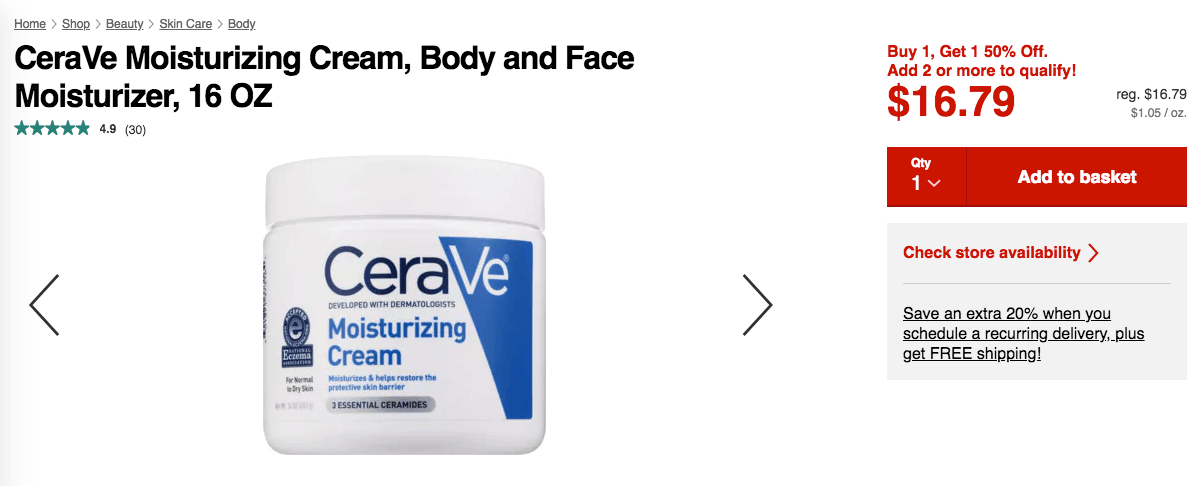
CeraVe Moisturizing Cream, Body and Face Moisturizer
purified water, glycerin, ceteareth-20 and cetearyl alcohol, caprylic/capric triglyceride, behentrimonium methosulfate and cetearyl alcohol, cetyl alcohol, ceramide 3, ceramide 6 ii, ceramide 1, hyaluronic acid, cholesterol, petrolatum, dimethicone, potassium phosphate, dipotassium phosphate, sodium lauroyl lactylate, disodium edta, phenoxyethanol, methylparaben, propylparaben, phytosphingosine, carbomer, xanthan gum
CVS Moisturizing Cream ingredients
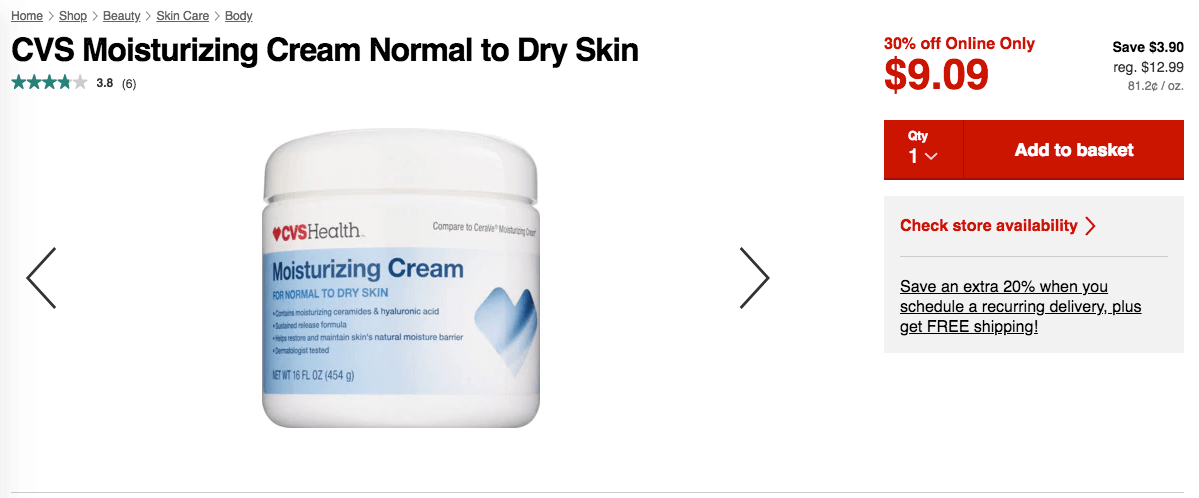
water, ceteareth-20, cetyl alcohol, glycerin, caprylic/capric triglyceride, dimethicone, stearyl alcohol, cetearyl alcohol, petrolatum, ceramide 3, ceramide 6 ii, ceramide 1, beta-sitosterol, sucrose stearate, sodium hyaluronate, cholesterol, dipotassium phosphate, sodium lauroyl lactylate, phenoxyethanol, phytosphingosine, methylparaben, propylparaben, disodium edta, carbomer, xanthan gum
CeraVe moisturizing cream vs. CVS moisturizing cream: Ingredient breakdown comparison
Using the script I made a few weeks ago, I was able to compare and contrast the ingredients.
ingredients in both: dipotassium phosphate, ceramide 6 ii, dimethicone, propylparaben, cholesterol, disodium edta, xanthan gum, phytosphingosine, cetyl alcohol, glycerin, caprylic/capric triglyceride, sodium lauroyl lactylate, petrolatum, carbomer, methylparaben, phenoxyethanol, ceramide 3, ceramide 1
ingredients in CVS but not in CeraVe: sodium hyaluronate, water, beta-sitosterol, ceteareth-20, sucrose stearate, stearyl alcohol, cetearyl alcohol
ingredients in CeraVe that are missing in CVS: hyaluronic acid, purified water, potassium phosphate, behentrimonium methosulfate and cetearyl alcohol, ceteareth-20 and cetearyl alcohol
more in CeraVe (comes earlier in CeraVe ingredient list than CVS ingredient list):
dipotassium phosphate, disodium edta, propylparaben, cholesterol, xanthan gum, glycerin, caprylic/capric triglyceride, sodium lauroyl lactylate, carbomer, methylparaben, phenoxyethanol, ceramide 3, ceramide 1
more in CVS formula (comes earlier in CVS ingredient list than CeraVe ingredient list): dimethicone, phytosphingosine, cetyl alcohol, petrolatum
My Dad the Chemist’s verdict
I sent my dad the two ingredient lists (with CeraVe labeled as “Product #1” and CVS labeled as “Product #2”) and told him that one of them was the drug store version, and the other one was the name brand. Here’s what he had to say.
The “Ha! Ha!” is my favorite part.
How to spot an inferior generic product: Insights from my dad the chemist
In this case, my dad was spot on about which one was the name brand. How was he able to guess? Although the most beneficial ingredients are present in both creams (Ceramide 3, Ceramide 6 II, Ceramide 1, and Hyaluronic Acid / Sodium Hyaluronate), the CVS ingredient list had petrolatum earlier in the list than those four ingredients. This indicated that #2 (CVS) may have been trying to save costs by using a cheaper ingredient (petrolatum), which may also make the product less effective.
Bonus insight:
Hyaluronic acid (HA) is the same as sodium hyaluronate, so even though the CVS ingredient list looks like it’s missing HA, it actually does contain that ingredient—just under a different name: Sodium Hyaluronate. So, this is something to keep in mind when comparing different lists in the future.
Save or Splurge? Verdict: Splurge (but wait for it to go on sale)
Without taking a closer look at the actual formulas, it’s hard to say if the difference in beneficial ingredients is significant enough to warrant buying the name brand. However, my dad still recommends buying #1 (CeraVe moisturizing cream) but waiting for it to go on sale and/or using a coupon, instead of buying #2 product to save money. Have your (high-quality) cake, and eat it too!
This actually means a lot, coming from my dad, since he loves saving money. Although both products contain the same active/functional ingredients, the generic version may be trying to supplement the moisturizing properties with a cheaper ingredient, petrolatum, which appears higher in the ingredient list than any of the key four ingredients that make this product effective.
He recommends buying the name brand version even if it’s more expensive, since you could be getting access to more expensive, effective ingredients like the three ceramides and HA. In this case, it comes out to a ~20-cent price difference per ounce, but the difference in active/expensive ingredients could more than make up for that premium.
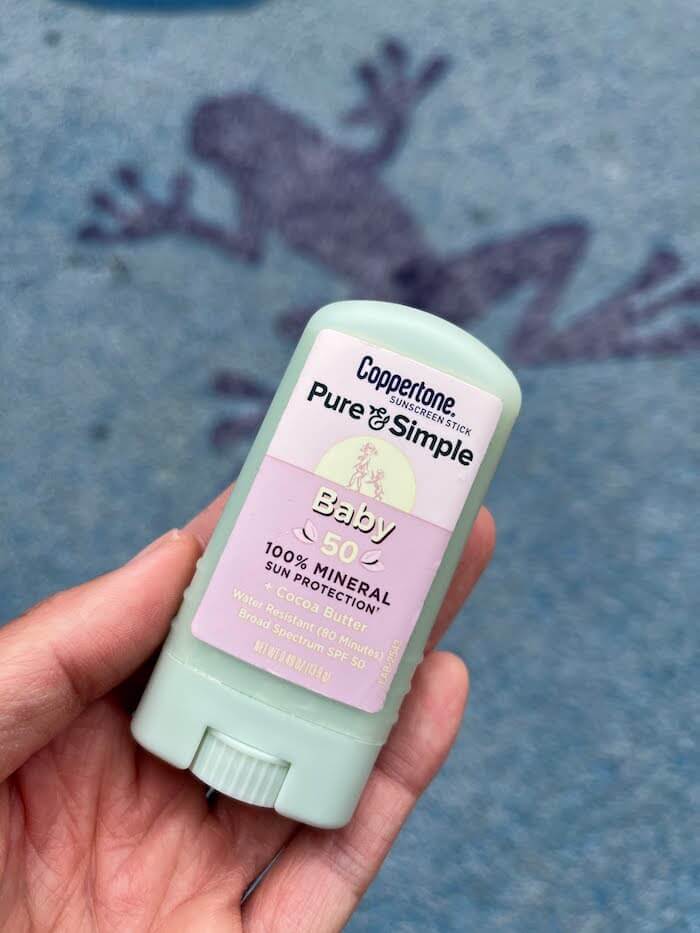
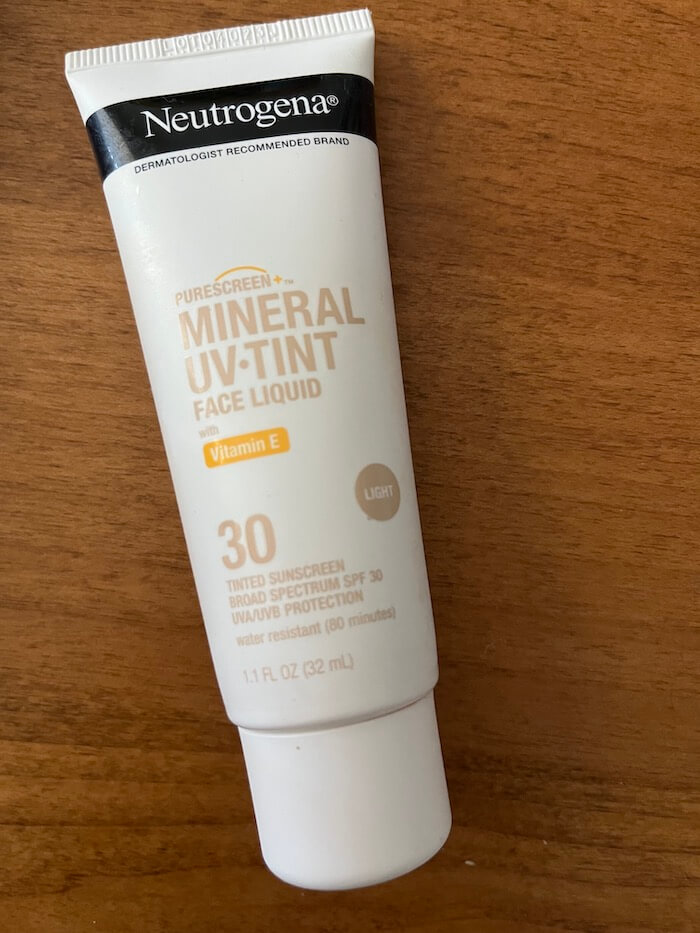
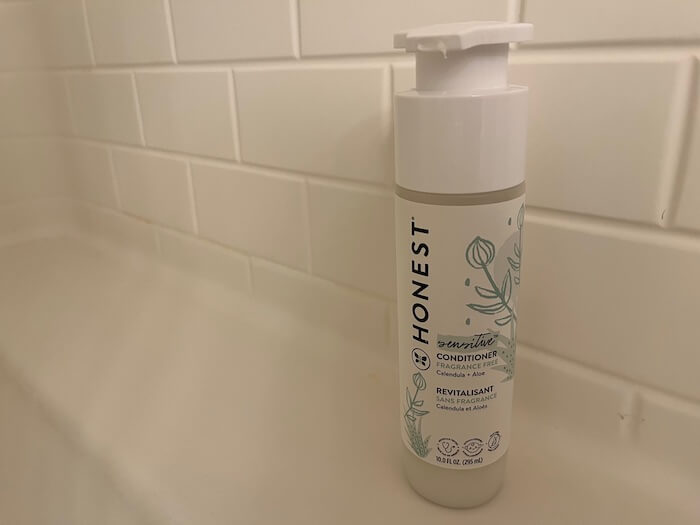

Share this post
RSS
Facebook
Reddit
Email